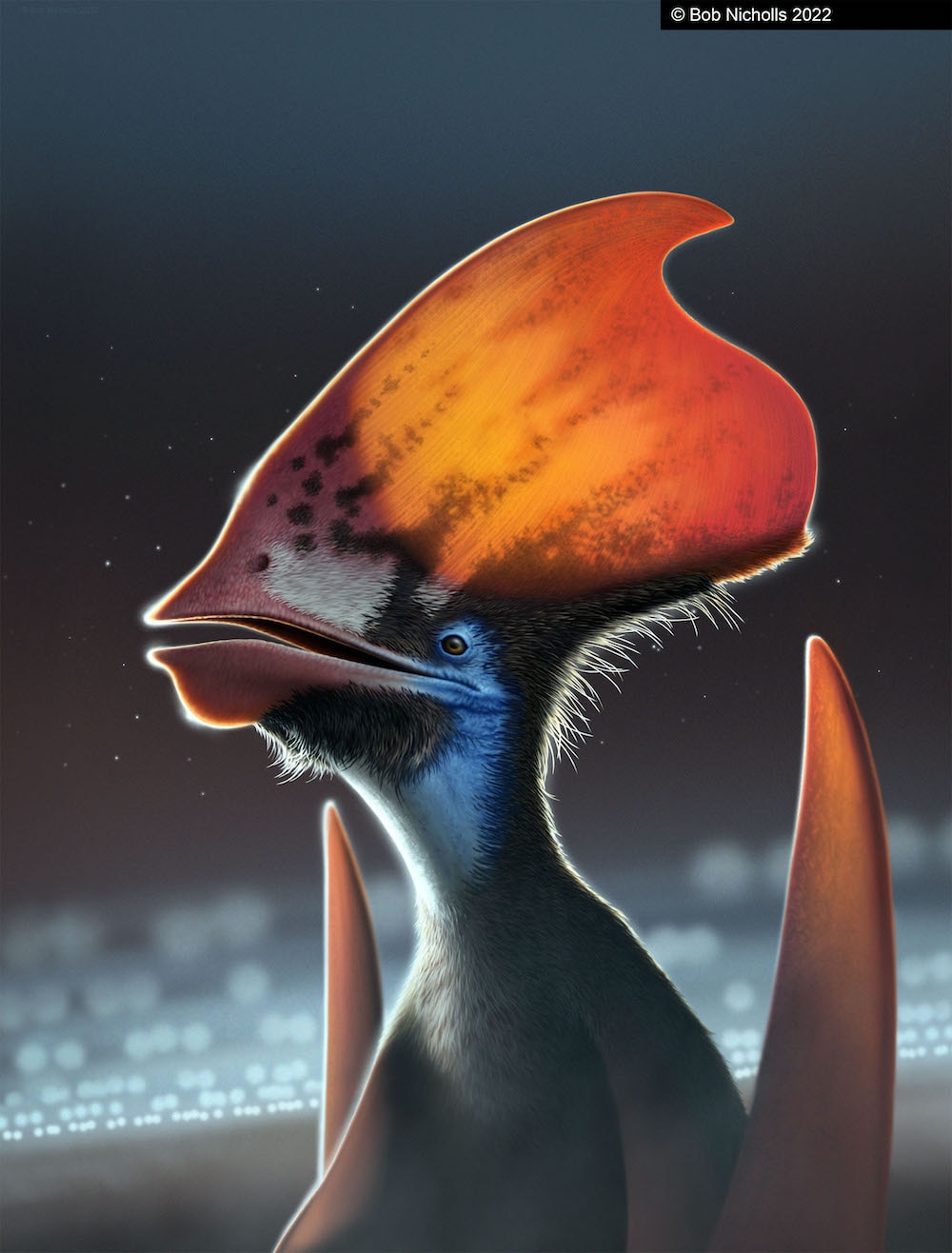Create a free profile to get unlimited access to exclusive videos, sweepstakes, and more!
Pterosaurs were prehistoric flying chameleons that could change color
Some dinosaurs were trippier than others.

Strange things soared in Cretaceous skies. If you looked up to see what was casting a huge shadow from above, you might have seen a winged color-changing dinosaur.
Excitable pterosaur Petrie from The Land Before Time would have been thrilled to find out he had the ability to change color. Maybe he did. New research has found that at least one pterosaur species could. Tupandactylus imperator, which flaunted some really flashy headgear, had melanosomes in its feathers. Melanosomes, which are the same kind of color-changing apparatus you find in the cells of creatures such as chameleons and cephalopods, synthesize melanin. The feathers of pterosaurs are now thought to have been able to change color.
Even though winged dinosaurs like Tupandactylus, which were also the last surviving dinosaurs and ancestors of birds, could not control what color they turned into next, feathers that grew back in after they molted may have turned out to be a different hue. Melanosomes determined it. This is what paleontologists Aude Cincotta and Maria McNamara of University College Cork found out when they marveled at those 115-milion-year-old feathers under an electron microscope. They led a study recently published in Nature.
“It was not really a surprise to find melanosomes in the feathers, as it is widely accepted in the field of paleontology that melanosomes can fossilize,” Cincotta told SYFY WIRE. “It was more of a surprise to see that they had different shapes.”
Melanosomes are structures inside cells that synthesize the light-absorbing pigment melanin (which is also the most common pigment among animals). They also store melanin and carry it to where it is needed. In the feathers of extant birds, melanosome shape and the organization of melanosomes within the feather are closely related to the color of that feather. The feathers that were preserved along with the magnificent head crest of Tupandactylus were hairlike feathers and more fluffy, branched feathers found at the bottom of the crest.
What Cincotta and her team didn’t expect was seeing that the different types of feathers preserved with the crest had differently shaped melanosomes. Because melanosome shape and organization both have an influence on feather color, that could only mean that Tupandactylus must have had something in its genes that changed the shape of the melanosomes and, ultimately, what color its feathers would be. Feather color is set once a feather grows in, but the feather that replaces it may not be the same. It is not uncommon for extant birds, distantly related to this creature, to molt and then regrow feathers of another color.*
Iridescence is also related to how melanosomes are organized. Could that mean this already bizarre pterosaur’s feathers were iridescent?
“Iridescence occurs when light interacts with layers of closely packed melanosomes and air,” said Cincotta. “It only happens in the barbules of feathers, and the feathers of Tupandactylus don’t have barbules, only barbs, so it's unlikely they would have been iridescent.”
If you look closely at a feather, you will see barbs, tiny branch-like structures, and those are covered in even smaller branches, known as barbules. Melanosomes that are packed so closely as they are in barbules are known as platelets. Those which are in barbules also have certain nanostructures that allow for the iridescent effect when light hits them. Just the fact that pterosaurs even had feathers, and that feathers were found to have the ability to change color, were breakthroughs after years of debate as to whether pterosaurs were feathered fliers.
Whatever the actual color of Tupandactylus feathers was, they were used for some sort of visual display, and if you ask Cincotta, so was its head.
“Tupandactylus was the pterosaur with the biggest head crest ever, and we think it would also have a role in visual display, which goes well with the function of the feathers located just below the crest,” she said. The feathers might have helped attracting even more attention to the crest.”
This pterosaur must have been hard to miss for both mates and potential prey. What a showoff.
*That explains why your friendly neighborhood author’s parrot will sometimes sprout feathers of a different color — like yellow where there was once green — after a molt.




























